Don't wanna be here? Send us removal request.
Video
tumblr
Funny, courageous, outgoing, lovable and independent 1 year old with an occasional attitude is my son Joseph Tomas Cardenas. Joseph is at the age where he’s learning and exploring new things and as a parent it’s not always easy to deal with and not every day is the same.
There’s the occasional tantrum or two but there’s also the loving and happy side of him which he shows his family every day. There’s new experiences, old experiences and normal routines that Joseph goes through everyday.
As a toddler there’s no worries in the world, you’re learning and loving life as you go and as a parent, you’re not only giving love and teaching your child but you’re also being taught in the process. It’s a journey that comes with numerous blessings and sweet surprises for not only Joseph but for me as his mother.
Life with a child is a whole other world, once you bring a child into it you see the world differently; it’s as if you are seeing the world through his eyes and through his interactions, experiences and emotions.
This photo essay will attempt to give you a glimpse into what Joseph's life looks like, from his activities, experiences and to his personalities while also showing you how he interacts with those around him.
0 notes
Text
Developing your Portfolio; Workshops, Awards, Contests, and Grants & Turning Pro
Anyone in a position to dispense photographic assignments or hire photographers on a permanent basis is constantly besieged by the increasing numbers of photographers.
Portfolios can range from a collection of twelve dog-eared, yellowing prints with accompanying yellowing newspaper tear sheets to a dazzling display of color transparencies in a carousel tray.
The portfolio of a working photographer is different from that of a beginner. Editors expect more from the experienced applicant, so no matter how much or how little experience you have it’s important that the body of work you present fully reflects your growth and development as a photographer.
Updating and Refining your Portfolio over Time
If your portfolio represents the best work you are capable of at any moment in your career, then your portfolio should never be far from your consciousness. Every time you go out on an assignment, you should be thinking of a picture that might add to your collection.
Most of the photographs in the portfolio of a working photographer should be ones shot on assignment. They show the photographer's ability to fill a publication's needs and to get the job done-- well and on time. When preparing a slide presentation, it is worthwhile to make a slide of the tear sheets to show the diversified publications for which you have worked.
The working photographer can benefit by including a personal project in a portfolio, especially where published picture stories do not exist.
Editing the Portfolio
Too many photographers underestimate the importance of the portfolio. The photographer usually gets a shot at winning a potential client. Make that shot count with a presentation that shows imagination, technical ability, solid storytelling content, curiosity, spontaneity, and, of course, intelligence. Sequencing the pictures in the right order is of paramount importance. The portfolio should have a philosophy. It should have climaxes. The first pictures you show should be among your strongest pictures so that you capture the attention of the viewer from the get-go.
If you are showing color, juxtaposed different colors. You don't want five or six pictures in a row with the same basic colors. Varying the dominant colors from picture to picture will add vibrancy and vitality to the tray.
When making presentations to photographic agencies, remember to include a large pool of material from which specifically tailored selections could be drawn.
What the Portfolio Shouldn’t be
There are many pitfalls along the way to a winning presentation. They relate to behavior, presentation, and human considerations involved in any social transaction.
There are masochistic photographers, whose portfolios contain prints mounted on 30” x 40” boards with a collective weight of over one hundred pounds. Large photographs may have greater visual impact, but blowing up bad pictures doesn’t make it good. This kind of presentation is more suited for art photographers out to impress galleries or museums than to photojournalists.
Then there's sadistic photographers who have never taken a bad picture and presume to show you every one of their exposures so as to impress you not only with a wide diversity of subject matter, but also to prove that they are extremely capable of overexposing and underexposing.
Presenting the Portfolio
Personal appearance matters. When you present a portfolio, you are presenting a total package-- you and your work. How you look might be as important as how your portfolio looks.
Workshops, Awards, Contests, and Grants
There are dozens of workshops. They have proliferated throughout the United States, and you can find them in locales ranging from the gritty urbanity of New York to the rugged coast of Maine, the folksiness of the Ozarks to the Majestic splendor of Yellowstone.
Workshops afford you the opportunity to network and to meet important figures in the editorial profession as well as some who are only legends in their own minds. You will be able to show your portfolio to people who count and who can be influential in advancing your career. “The workshop makes you think,” says photojournalist and editor Declan Haun.
Workshops
A complete listing of the most important photographic workshops is given in Henry Horenstein’s The Photographic Source. The ones that particularly impact on photojournalists are the following:
Focus Workshops New School for Social Research
International Center of Photography Education Department
Missouri Workshop School of Journalism
Northern Kentucky University Summer Photography Workshop
Photographers Workshop The Center for Photography
Lisl Dennis Travel Photography Workshop
Photographic Contests and Awards
Journalistic photography must go on without regard to awards that the photography may bring. The journalistic need to inform and interpret should be the driving force. But, purity of motive aside, being recognized through awards and contests adds to one’s reputation and ultimate professional advancement.
To survive, the pictures presented must be simple and direct. They must have striking, instantly grasped content plus strong graphic elements .And they must have few, if any, distracting elements that dilute the main message. The important word to remember is content. The subject matter must be compelling and revealing. Superficially survives only first glances. Judges will be looking for entities in which the photographer has gone the extra mile, stayed after other photographers have left, and so has recorded deeper truths or previously unrevealed emotions.
Grants
Grants in photography can be very helpful to photojournalists wishing to complete personal projects or produce a specific body of work. Cash fellowships are awarded to photographers by a variety of governmental, government funded, and private organizations for work already completed. Guggenheim Fellowships are given to a very small number of photographers, but they are certainly important and prestigious grants for photographers to aspire to.
The following grants and fellowships would be most applicable to photojournalists. Because eligibility and deadlines vary, contact the sponsoring organizations directly for more information.
John SImon Guggenheim Memorial Foundation
NEA/Visual Arts Fellowships
Grand Prix International Henri Cartier-Bresson
NPPA/Nikon Documentary Sabbatical Grant
The Mother Jones Photography Awards The Mother Jones International Fund For Documentary Photography
The Alicia Patterson Foundation
Fellowship Program For Journalists
The Alicia Patterson Foundation Program was established in 1965 in memory of Alicia Patterson, editor and publisher of Newsday for twenty-three years.
The W.Eugene Smith Grant in Humanistic Photography International Center of photography
Turning Pro
Staff Job Versus Freelance
Can you make a living in photojournalism? Most working photojournalists follow on of two routes to a career in photojournalism:
Staff photographer or independent freelancer.
The Security of a Staff Job
The obvious advantage of a staff job is that you have a steady paycheck. If you are lucky enough to be a staff photographer for an established media outlet, you are usually an employee. This means you are paid a salary, have taxes, withheld from your paycheck, and are generally provided with equipment, supplies, and benefits such as health insurance and a pension plan.
The real advantage of full-time employment is that you can put your creativity into shooting and editing. You don't have to spend your time constantly trying to sell your work to unfeeling, unsympathetic, coldhearted picture editors.
The trials of a Freelance Career
If you choose the freelance route for a career in photojournalism you must join the ranks of the self-employed. Being self-employed is a dream many people share. You strike out on your own, set your own schedule, and earn your living by your wits and talent.
You have to be a damn good photographer because you probably will be competing for each and every job, at least until you build up a steady clientele. You also need to have substantial savings, or be gainfully employed, to finance your venture. And you have to be skilled in all aspects of running a business, including marketing, self-promotion, negotiating, sales, bookkeeping, financial planning, and time management.
Preparing to Freelance
In order to be a successful freelancer, you have to answer two deceptively simple questions.
What do you do?
Who buys what I do?
If you answered “I’m a photographer; I make pictures” to the first questions, take a deep breath and find a pad and pencil. Now write down all the things photographers do, record events, capture decisive moments, communicate ideas, illustrate a story, grab the viewer’s attention, and solve a client’s visual-communication problems.
Spend a couple of hours browsing through newspapers and magazine racks at your local library or bookstore.
See anything that looks like yours?
See any that look better?
Or worse?
Make a list of publications you could shoot for today based off your skill level and expertise
Repeat this process whenever you find yourself near a collection of publications-- this is a productive way to use the hour or so waiting at an airport for your next flight.
Set Yourself Apart
Market on the internet
Learn what sells
Speak another language
My Mini Portfolio

When it comes to building my portfolio I want it to be an upgraded of the one above. Since I was young I have always traveled and I loved photographing everywhere that I went. So I guess you can says I love photographing the outdoors.
With this class and the beginners class I am hoping to use more of my techniques rather than over photographing a million of the same things. And I hope that once the world becomes somewhat normal I would love to continue traveling again to get the opportunity to capture new places in a much more advanced way. I’d love to also capture new cultures in different depths of fields, angles to add into my updated/ more improved portfolio.
When it comes to workshops & grants would be interested in anything similar to:
Northern Kentucky University Summer Photography Workshop
Photographers Workshop The Center for Photography
Lisl Dennis Travel Photography Workshop
I feel that any workshop such as these would be extremely beneficial to the career in photojournalism and helping me capture photographs for my personal portfolio as well as being able to put those photographs into contests and to allow me to get grants.
0 notes
Text
Law: Photojournalism
Where Photojournalists can take Pictures
You may photograph in most public places and in a wide variety of publicly owned property across the United State. You can take pictures on Main Street on the sidewalk next to Main Street, in Golden Gate Park, as well as at a city-owned zoo. You can photograph on the campus of a public institution of higher education like Florida State University or the University of Michigan. Photographing in the university’s dorm sets up a different situation even if a public university owns the dorm. Dorm management has the right to restrict entry into the building for security reasons. Your rights to take pictures in the dorm's dining hall are less clear.
In any event, when you take pictures in a dorm, even if you live there, you should announce yourself as a journalist so other students know you are not taking pictures just for your own pleasure and that the pictures you snap might be published.
Taking Pictures in Public Places
Although a public grade school or high school is publicly owned, it falls under it’s principal’s jurisdiction. While there is no law against photographing inside public schools, the principal has the authority to determine who comes and goes on school grounds, effectively granting or denying access to photojournalists.
There are times when bystanders try to physically prevent photographers from taking pictures. In such instances, the courts have generally protected photographers shooting in public places, according to George Chernoff and Hershel Sarbin in their book Photography and the Law.
Difficulties arise when police authorities try to stop photographers from shooting on public property. In many situations an overeager police officer may block a photographer’s lens. Police and fire officials have the right to restrict any activity of a photographer that might interfere with the officials actions. In ordinary circumstances, taking pictures and asking questions do not constitute interference. However, police and fire officials are permitted to restrict news gathering conduct if the photographer disrupts the pending investigation or activity.
Government Buildings
Public but under Special Rules
Although facilities may be publicly owned, a photographer does not have unlimited access to government buildings, such as the U.S. Senate and House of Representatives, the state legislature, or the chambers of the city council. A college football stadium or a downtown baseball park might be publicly owned, but access to these venues is completely controlled.
Prisons and Jails
Your rights to photograph in a city, county, or state jail are subject to the discretion of the warden, who may or may not permit you to enter and who they may determine everything you may or may not shoot once you are inside.
Military Bases
Like prisons, military bases are controlled by a government agency. You may enter at the invitation of the officer in charge.
Taking Journalistic Pictures in Privately Owned Places Without going onto a person’s property, you may, from the street, photograph someone in her yard, on her porch, or even inside her house if you can see the person. You don’t need the subject permission.
The photographer, however, still should be somewhat cautious when shooting onto private property and should not step onto the grounds to get the picture.
Tips for Avoiding Jail: First Amendment rights
- Carry your credentials at all times
- Do not trespass onto property that is clearly private or marked with a police line
- Do not take anything from the crime scene-- you will get charged with theft
- Do not call the arresting officer names or get into a shoving match
- Know the name and phone number of a criminal lawyer, bail bondsman, and the police department spokesperson
From David Blumenkratz Pinterest Page: Legal Issues

Privacy: When Does a Journalist’s Camera Illegally Infringe?
Over the years, however, some commonly recognized legal principles of privacy have evolved, based on federal and state laws and court cases. As applied to photography, these principles protect individuals from anyone:
- Intruding by taking pictures where privacy could be reasonably expected (in legal terms, this is called the “tort of intrusion upon seclusion”);
- Using a picture to sell a product or service without consent;
- Unfairly causing someone to look bad; and
- Taking truthful but embarrassing photos
Accidents
If someone is injured in an automobile accident or plane crash, falls out of a tree, nearly drowns, or is struck by lightning on public property, that person would have a “public medical condition.” People who are victims of a crime, accident, or an “act of God” are considered newsworthy, and they can be photographed outside the hospital.
While you can take and publish pictures of children in schools and public parks, you are open to suit only if the photo might be considered embarrassing or derogatory. Always try to explain to a parent or other responsible adult at the scene who you are and what you are doing.
Press Credential Useful but Limited
Press passes entitle you to nothing. Essentially, your press pass gives you no more rights than those enjoyed by the public. The press pass does not give you a right to break the law, even if you are in hot pursuit of a big news story.
On the other hand, authorities cannot discriminate against you or your newspaper at the scene of a crime or disaster. All reporters, photographers, and TV camera operators must have an equal opportunity to cover the story.
Copyright: Who owns the pictures?
When an employers owns your images When you are an employee, your employer owns the copyright to your photos, regardless of whether they are still images or video. The employer holds the rights to the pictures and can reprint or resell them.
When you Retain the Copy If you take pictures that were shot on your own time without an assignment, even if you are a full time employee, you own your images and the copyright to them. If you sell one-time rights, you can resell the image elsewhere after it has run. In a second type of arrangement, you can sell the picture along with exclusive rights to it for a specified period of time. In a third type of agreement-- for a lot more money, one hopes-- you can sell your copyright.
Respecting the Copyrights of Others
“Can I use this photo I found on Facebook in my news story?” The simple answer is NO unless you have permission to use it from the photographer. Remember to use “found” images from newspapers, magazines, or the web without express permission to do so, or unless you have established with confidence that the image is in the public domain or has an appropriate Creative Commons license attached.
Creative Commons is an online licensing system that enables photographers, artists, writers, and musicians to authorize the free use of their creative work.
From David Blumenkratz Pinterest Page: Legal Issues

0 notes
Text
Observations of a Photographic Curmudgeon
Curmudgeons are supposed to be crusty, churlish, and irascible.
On Emptiness and Ambiguity
Some photographs are ambiguous and lend themselves to several possible interpretations. This inherent ambiguity is predicated on their selection and isolation from the totality of events. They may be taken out of context and are often dependent for interpretation on the mind-set of the individual viewer or the selective eye of the photographer.
Journalistic photography demands clarity and lucidity and the avoidance of ambiguity wherever possible. There is a place in photography for mystery and abstraction.
The Great Delusion
Most magazines today rely primarily on freelance photographers. Achieving the status of contributing photographer or staff photographer is directly related to the quality of your output, the intelligence of your personal sales effort, and the hard work you invest in your photojournalism career.
- Make yourself valuable through your ideas and your photography. - Get your pictures where they belong when they belong when they are promised. - Make every picture count in terms of visual impact and content.
On Exuding Confidence and Hiding your Insecurities
It’s important that when you see any agents or editors you should prepare the work carefully, bring only pictures you consider the best examples of your work and eliminate the mediocre.
You need to be confident about your work rather than negative in its presentation: negativity is contagious. Your photographers are the only thing being judged, not the circumstance under which they were taken or those that prevented them from being better.
On Luck
Six Ingredients:
- Commitment - Opportunity - Support - Visual insight - Presentation - Luck
The commitment to be where the important stories of the year are taking place, the opportunity to get there, the support of publications willing to finance and publish your work, the visual insight that only the photographer can provide, and a strong presentation.
And luck--- that is the intangible element. Luck determines the caliber of the competition.
On overactive Egos and Humility
It’s important for everybody to have a sense of self, to be confident about their abilities and to communicate that confidence in dealing with clients. Having self-assurance doesn’t mean that the photographer should project self-importance. A little humility goes a long way.
On Overshooting
The deal makers see magazines as just another opportunity for the development of mega-communication empires throwing off big bucks to stockholders rather than as a vehicle to inform and communicate.
Instead of finding miracles, instead of seeing thoughtful and concerned magazines willing to publish earnest and serious work, we are told that there is no place in contemporary journalism for a magazine that features greatness.
Who’s Responsibility is it, Anyhow?
There was a time in photojournalism when important photographic projects were sponsored and supported by worldwide magazines. In recent years, the responsibility has developed primarily on individual photojournalists and in some cases the photographic agencies that represent them.
Hard-hitting photojournalism demands that the mega-media give greater support to the people who give them pictures; otherwise they abdicate their editorial responsibility.
On Photographic Censorship and the Law
The Supreme Court of the United States has established three basic criteria for the judgment of what is obscene, pornographic, and unacceptable to society. For almost two centuries, U.S. courts have been wrestling with the question of pornography, what it is, and how to deal with it in terms of public and social policy.
Photographers define their own limits and boundaries. What they have in common is the need and desire to test the limits to which they can push public acceptance of their work and the receptiveness of subjects to be photographed in an area of great personal privacy.
On “Droit de Regard” __ “The Right to Look”
“Droit de Regard” maintains that publishers, historically, have treated photojournalists’ work with less respect than they have that of writers. These are glaring instances where the word of photographers as witnesses to events has been ignored by editors, where in the opinion of photographers their pictures have been badly edited or badly laid out with little understanding by the editors or graphic designers of meaning of the pictures and the context in which they were taken.
Too often publishing decisions are made by visual illiterates with little concern and understanding of for the photojournalistic process. They treat photographers like plumbers who are bringing back images designed to fit preconceived holes on the printed page.
On “Being There” There is a school of photojournalism which uses “f8 and be there” as its credo for great photography. “Being there” is not enough.
Why is it that photographers covering the same event produce pictures of varying and dramatically different quality?
- Because each photographer has a differing technical background, which dictates the lenses he or she uses.
Great journalistic photography is a spontaneous fusion of serendipitous elements coming together under discriminating control of the photographer. Great pictures happen because the photographer was trained to instinctively react to the moment of decision.
On Getting Close Enough
The words of Robert Cap have become a mantra for the war photographer. He said, “if your pictures aren’t good enough, you’re not close enough.” It dominated his whole approach to war photography, propelled him into the middle of battle, and exposed him to constant danger. Getting close enough is important not just to war photographers, but all photojournalists who want to get past the superficial.
Getting close to the action with the camera does not automatically produce great pictures. Developing a relationship with the subjects and understanding of their lives is perhaps more important than the distance from which you photograph.
Too many photojournalists today stand back when they observe and record moments, afraid to take extra step to make more pictures. It often results in a cold, clinical approach. Getting close is not easy, but it is worth the effort.
- - - - - - - - - - - - - - - - - - -
When it comes to photojournalism, I believe that when it comes to its role in contemporary society it’s important because when it comes to the news via newspapers, magazines or on television the photographs/ videos make the stories that much more effective. It’s being able to show viewers a relationship between then and the photo, being able to get the viewers into their emotions more through the photographs.
The viewers are who photojournalists need to keep in mind when approaching their work because it’s the way they view and perceive the images. If they feel no connection, if they don’t see anything that stands out to make them look and coming back to the media outlet then are you effectively photographing?
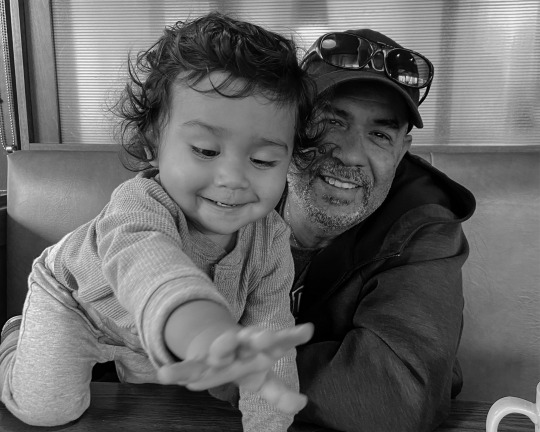
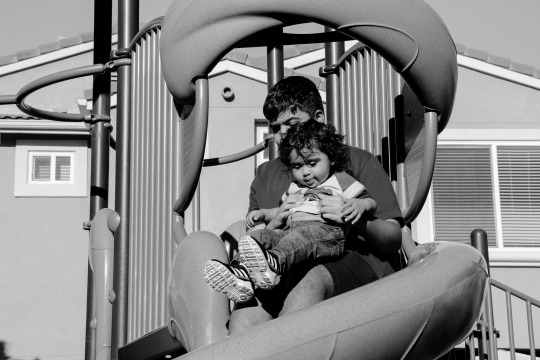
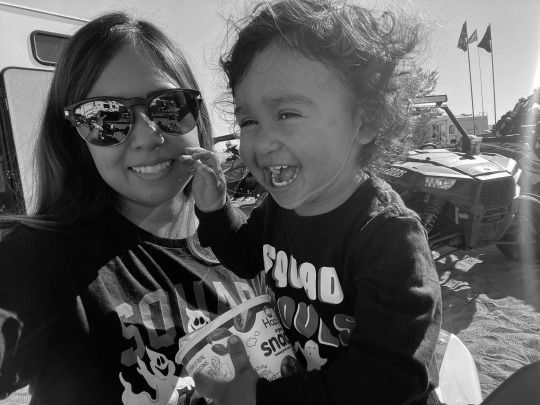
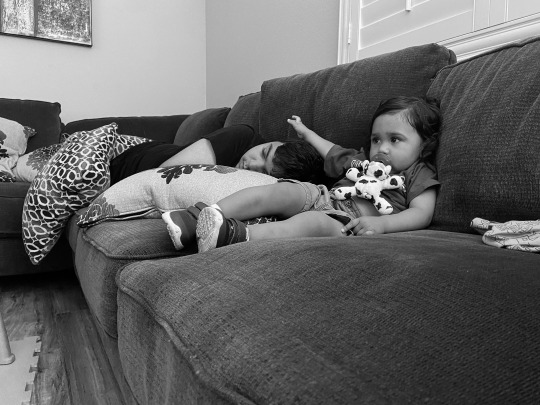
0 notes
Text
Chapnick & Addario: War Photography
Living on the Edge: taking risks in wartime and peacetime
Photojournalism is hazardous. Reporting what happens in the world puts photographers on the edge of constant disaster. Any photojournalist worth his film approaches any assignment aware of what he may face.
Looking for Bang-Bang
War, poverty, and misery are the most seductive sirens of photojournalism. They reflect conflict and drama of man’s life-and-death struggle for survival. Is war photography worth the risk? Some photographers go to war zone for money, some for ego satisfaction and journalism, some to make an instant reputation, and some for adventure. In the photojournalistic vernacular. “Bang-bang” is synonymous with action, producing photographs approximating the archetypal Robert Capa photograph showing the instant of impact when a bullet struck a Spanish Civil War soldier. Editors revel in “bang-bang” pictures, and readers are fascinated by them.
Prerequisites for survival in a war zone
For photographers considering war photography, the challenges are clear; to be responsible as journalists and to stay alive. Often safety and objectivity go hand in hand; prejudices revealed may precipitate retaliation. The badge of courage and honor in photojournalism is to bring back informative photographs that reveal the truth as you see it. Before you can be a war photographer, you have to be a photographer. There’s no award for death or shrapnel in your body. Shrapnel can’t be published! Given that the rules of war are not only written but likely to be unknown to most of the participants, it may be helpful to current and future war photographers to evaluate these recommendations for survival when taking pictures in life-threatening areas:
1. You should speak the primary language of the country and know as much as possible about the native body language and gestures.
2. You should physically fit and know how to protect yourself.
3. You have to be emotionally stable, resourceful, and intelligent.
4. You have to be well equipped with such life-saving equipment as a custom-made flak jacket.
5. Study the country and its history. And read everything you can lay your hands on about the conditions that have given rise to the armed confrontation.
6. You have to be quick-witted enough to talk yourself out of threatening situations.
7. Don’t go on photographic forays with other risk-taking photojournalists.
8. Use careful and mature judgement at all times.
9. Aimless wandering in search of pictures in a war zone can lead to disappointing photographs and potential injury.
10. Above, all, be human. This quality may be protection a photographer can have.
Psychic and physical hazards
Hazards related to photojournalism go beyond shrapnel, bullets, and rocks thrown by demonstrators or vengeful policemen. Psychological scars come with constant exposure to extreme violence. Such events can traumatize photographers just as they do bystanders. Machete-dismembered bodies may haunt photographers’ dreams for month and even years. Working in a war zone colors behavior, sensitivities, and relationships with other in unexpected ways.
Why take the risk?
Life does not exist without risk. Statistics show that more American die in automobile accidents each year than in the Vietnam war. Most traffic fatalities take place within fifteen miles of one’s home. There is always an accident waiting to happen. Photojournalism is for those who get turned on by challenge, by being there, by living life fully.
Why do people climb mountains?
Why do people dogsled across Antarctica?
Why do people hang glide?
Because these are challenges to be confronted that gratify them and benefit others.
Addario Chapter 4: You, American, Are Not Welcome
Talked about how Addario had the flight to Afghanistan to get familiar with a Canon camera when she’s only ever used Nikon. When getting to Afghanistan she shared a room with another woman who was not as advanced as everyone else there, just like herself. Herself and the other photographers prepared themselves until the US was ready to retaliate for the attacks. Once it happened, they all rushed to report on the ground. Addario used her sources such as being a woman to get interviews with other women in that country. She soon became fascinated with the “nation od dispelling stereotypes or misconceptions through photographs. Of representing the counterintuitive.” She then found herself in a situation around men in which she had to physically defend herself and eventually get away.
Addario mentioned that “so much of the buildup to the war in Afghanistan was a mystery to me, but it was familiar territory to my more seasoned colleagues,” and it was opposite of what Chapnick mentioned about how it’s important to do your research, know the country, and the history.
“I also made sure I used every advantage I had. I knew from my time in Afghanistan that I had a unique kind of access. I used my gender to get inside the women’s madrassas (religious schools) to interview and photograph devout Pakistani,” said Addario. It connects to when Chapnick mentioned that it’s important that “you have to be emotionally stable, resourceful, and intelligent.”
“The second I felt something, I did a karate back-kick I’d learned in middle school… And I whacked the man directly behind me over the head with my lens. His eyes rolled back in their sockets, and he staggered,” said Addario. This part connects with another point that Chapnick made which was that “you have to be quick-witted enough to talk yourself out of threatening situations.”
Photographs below belong to LYNSEY ADDARIO.


0 notes
Text
Critique 2
1) OBJECTIVES
What I was attempting to accomplish in these set of photographs is getting different sides of my subject as well as him in different environments compared to the first set of photographs.
2) OBSTACLES/CHALLENGES
I would say that what helped my work is having more patience and understanding more about how important patience is rather than wanting to take so many photos and hope I have the right one. What has also helped my work is allowing my subject to new activities which will lead to new expressions. My biggest challenge/obstacle during capturing my moments my subject being a 1 year old.
3) PERSONAL ANECDOTES
Experiences that I’d say has affected the way I approach my work is when allowing my subject to do the same or new activities I sometimes find myself being a mom and being in that moment/ being cautious and a moment leaves without a photograph of it. I feel that when on the field having mom instincts won’t affect my growth as a photojournalist, but I feel that I need to be in the moment and observe to an extent that I maintain focus and know why I am there.
4) LOOKING AHEAD
Based on what I have accomplished so far, I am planning on continuing to learn from what I have shot and continue to improve my technique with how I photograph which could include my angles. I also want to continue to photograph my subject in different environments as well as his personalities so that my photographs don’t look the same. My vision is for my viewers to have an idea of all kinds of activities, expressions and personalities my subject has throughout his days.
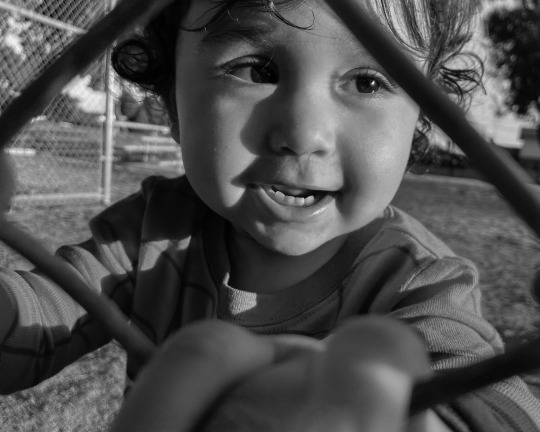
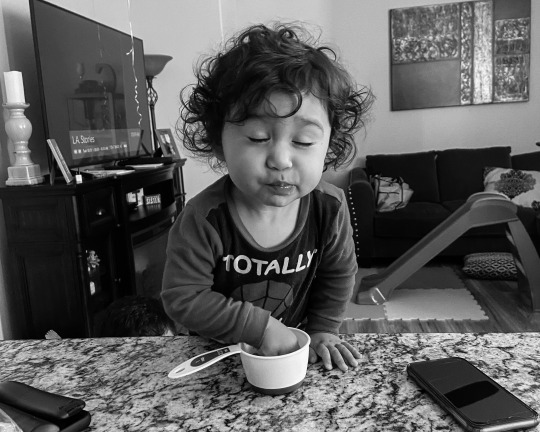
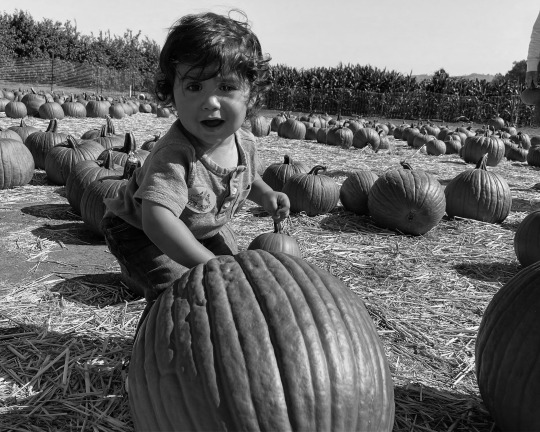
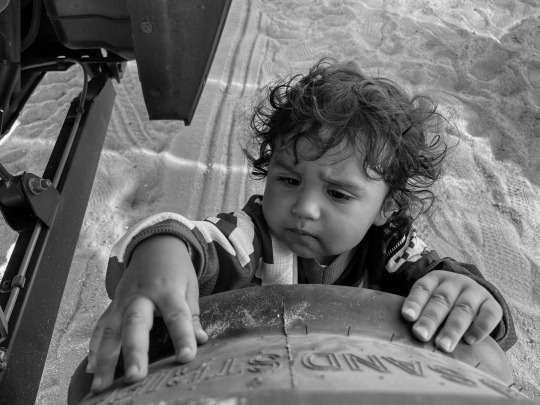
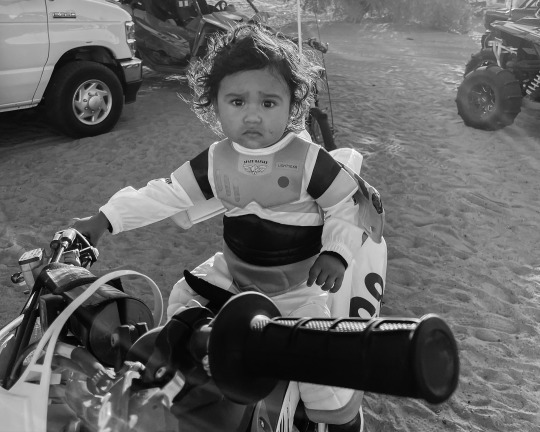
0 notes
Text
On Seeing, Perceptive, Time, and Creativity
Watchful waiting
One could not just find an object and immediately decide what vantage point would reveal it best.
It takes:
• Time • Study • Contemplation
With each view, the driftwood took on another shape, a different texture. The world of the photographer, of the photojournalist, is made up of such “now’s,” of capturing them as they will never again be exactly duplicatable in light, mood, body language, or what have you.
The photographer must practice the act of watchful waiting, of anticipation and instinct, which all develop through observing human behavior and refining one ability to see.
I can relate that when it comes to photographing the best photographs comes with all three tasks of time, study and contemplation. I remember going on an assignment years ago in community college to find a meaningful spot to photograph and how many days and hours it took to get the perfect photographs. I went to downtown Long Beach and i would sit in the same spot every time I went and it was different settings, different people and different personalities.
The creative photographer
“Creative” is the most overused word in the jargon of this tradecraft and the most underutilized element in its application.
Chapnick believes that creativity cab be assisted, that it can be developed over many years and often parallels the intellectual or artistic growth of an individual.
The next time you are challenged to take a “creative” picture of a seemingly boring nut and bolt, ask yourself how you can take a fresh view of a mundane subject.
The term creativity suggests originality of thought, a difference of approach that stems from a person’s imagination. Creative photography has much in common with any form of it.
For photographs with staying power, take your time
The most troubling aspect of contemporary photojournalism is the popular misconception that great photographs, even good photographs, do not take time. Picture editors and art directors should recognize that “instant creativity” is chimerical.
A photographer needs time- time to absorb the situation, establish rapport with the subject, scout the ambience of the local, digest and organize thoughts, and begin his picture taking.
The “quick shoot” is photography’s most prevalent weakness. It contributes to the superficiality of the personality stories we see in our magazines and newspapers.
Quality requires time. Time requires money. But it is money well spent if it makes for a memorable photograph or photographic essay.
What I’ve learned this semester so far and using my one year old as my subject, is that I spend a lot of time waiting because as a child they do a million things at once but there is always that one facial expression or thing that they do that you most likely won’t see again and that photo is well worth the time and waiting.
The need for patience
A corollary to time is patience. Without it, few photographers are going to reach the heights of their profession. Photographic mentor Minor White recognized this. He said, “you must quiet yourself down before you start to make photographs… you must get everything else out of the way of your concentration, and you come into it as free as possible of all the things you were just thinking about. Set aside some time to let all the garbage go by so as to pay full attention to the photographing.”
In photography there is a price to be paid for an itchy shutter finger, for a rush to judgment, for imprecision of thought. It is calculated in sloppy compositions, technical deficiencies, and vague storytelling qualities.
For as long as I’ve had a camera in my hand I’ve always had that Itchy shutter finger to rush a photo but I think that I’ve learned over the years that having patience always leads to something better. To just sit, wait and observe you see more than you would rushing to get “the Shot.”
The creative threshold
It is impossible to reduce creativity, and photographic creativity in particular, to a formula. Each photographer has a different creative threshold. More often than not, creativity results from good old-fashioned hard work. One must allow both the mind and the camera to explore all alternatives in solving a photographic problem.
The mind, not the camera, is the key to creativity. Liberal amounts of imagination and fantasy combined with personal observation can open the door to new ideas. One must be open to new concepts yet be independent in thought.
The creativity of photojournalists and photographic illustrators
The photojournalist is required to present penetrating views of the society in which we live. Creativity is reflected in the startling visual imagery of individual pictures as well as in the narrative ability of series of photographs. The photographer’s intellect must fuse the historical and contemporary forces which shape event into a single image. The photographer must also prepare for the moment when images are made by developing building blocks of knowledge about the subject.
The photographic illustrator is a visual problem-solver. The illustrators first challenge is to understand what the photograph must say or do. Unlike the photojournalist who deals with the reality of things, the illustrator nay be allowed the full play of imagination and fantasy.
Perceptiveness
Perceptiveness may be the most important quality of the truly great artist. It implies an in instinctive, intuitive insight and understanding based on sensory responses. The real world that photojournalists are trying to interpret is not- and never has been- one-dimensional. The media is often criticized for its emphasis on the sordid or the unpleasant. But to understand the world, one must confront the full spectrum of human experience.
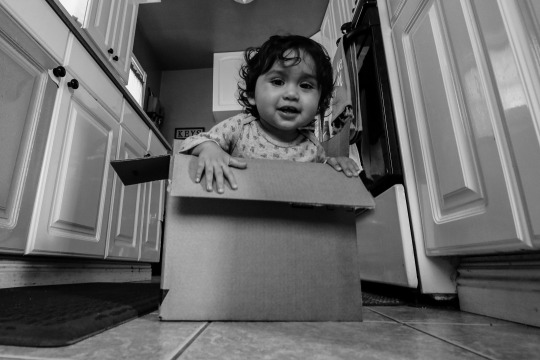
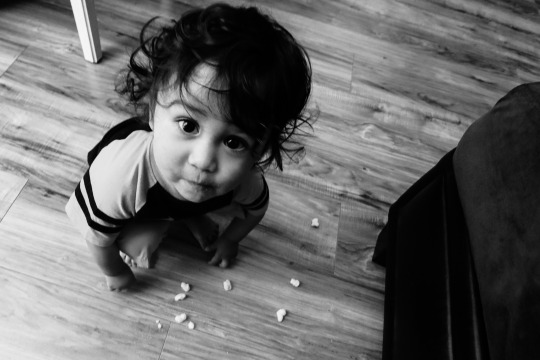
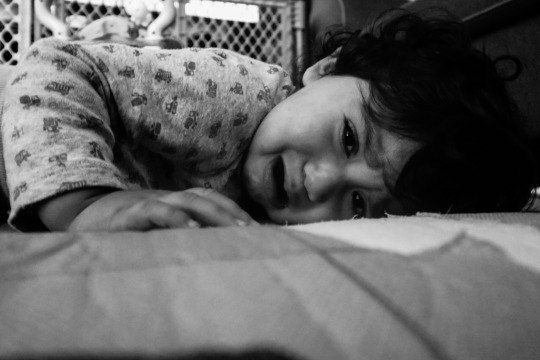
0 notes
Text
Twenty-nine Careers in Photojournalism
Brian Lanker (August 31, 1947 – March 13, 2011)
American Photographer

Brian Lanker’s early roots in newspaper photojournalism began at the Topeka Capital-Journal, where in addition to winning the Pulitzer Prize for Feature Photography, he was named Newspaper Photographer of the Year.
Today Lanker is considered one of the premier photojournalists and image-makers of the world, most recently acclaimed for his book and exhibition project I Dream a World. For that project, Brian photographed and interviewed seventy-six African American women activists of the civil rights and women’s movements who had not been included in the history books.
Before he became a magazine freelancer, Lanker paid his dues in newspaper photojournalism. After leaving Topeka, he became graphics director of the Eugene Register Guard. Through the years, Lanker has proved that being considered a “prima donna” because of his transcendent concern for how his pictures are used is a small price to pay for perfection.
He conceptualizes ideas: he photographs with visual discipline and simplicity; he gets close to his subjects; he has great concentration; he does outstanding interviews; and his graphic taste is impeccable. He becomes for any client a sextuple-threat journalist.
“Brian is the most Naturally talented photographer. If only he’d use it,” said Lanker’s boss Rich Clarkson.

I Dream a World Cover/1987
Photographed is Septima Clark, whose quiet dignity is evident in this portraits, was one of the unsung heroines of the civil rights movement. She believes that literacy is the key to empowerment. According to Truth Needs no Ally by Howard Chapnick.

PUSH, 1972: During the final contractions Lynda strained every muscle in her body and then radiated joy upon the arrival of their daughter. As James Estin wrote much later in The New York Times, ”(Brian’s) photographs of childbirth were the first that many people had seen. At that time when almost no father went into a delivery room. It was extraordinary that a newspaper would publish this and that you could tell this in a photo essay.”

SMALL TOWN BARBER, 1974: John Hash’s barbershop in Buffalo, Kansas, was open only on Tuesdays, long enough to handle the needs of the 400 or so townspeople. Bill Stevens, the farmer in the chair, drove in from Benedict but had to track down Hash at a local eatery. A haircut cost six bits. Hardly anyone asked for a shave. (The image appeared in LIFE magazine’s special issue “A Day in the Life of America,” Thursday, September 5, 1974.)
1 note
·
View note
Video
tumblr
My multimedia presentation is in relation to my photo story in which is about documenting a photo a day of my 1 year old son. My video is called, “day in the life of a toddler” and it shows a series of things that my son does throughout his day.
Sound
Capturing sound in addition to images may require conducting a face-to-face interview or placing a wireless microphone on the subject.
Two approaches to “sound on tape”
1) Audio and Video Locked Together: Record sound with the same device that is capturing the images- a dedicated video camera, a DSLR that records sound and video simultaneously, or a smartphone
2) Independent but Simultaneous Recording: in the early days of “talkies,” sound was recorded apart from the film. The two were merged during editing.
The recording device
1) Video cameras: Record visuals and sound simultaneously. The built-in microphones on most video cameras are no substitute for professional external microphones. Make sure you can use headphones when selecting a video camera.
2) Digital single lens reflex (DSLR): The more advanced allow monitoring sound and controlling volume. Although the built-in microphones in most cameras cannot record professional quality sound. When you select a DSLR camera, make sure that it provides a way to monitor the sound with headphones.
3) Smartphones: A smartphone built-in microphones was designed for use in a traditional cell phone- not for recording professional audio quality sound. Check out your smartphone to make sure that it will be compatible with your external mic.
4) Solid-state recorders: these recorders can compress sound on the fly into various formats of your choice, allowing sessions. The sound files can then be down-loaded directly to a computer.
5) Laptop audio interfaces: it can turn your computer into a sound studio in a pinch. You need a port on the computer to plug in a high-quality external microphone. Although, most laptops have poor quality microphone ports.
Preparing and editing audio
Transcribed the words
One of the most tedious but necessary steps in producing a multimedia or video piece is transcribe interviews from audio to paper. This step in the process is called logging.
Organize the copy by:
• Identifying the crucial quotes • Eliminate your own questions • Save the best • Let the quotes tells the story
Write the script
When you sit down do edit the final piece, you will have at your disposal a set of photographs, interviews and natural sound.
When reviewing your script be sure to:
• Include the five W’s and H • Identify the dramatic arc • Write simply: write in short sentences using simple words.
Candid conversations can provide the script
Candid conversation segments are useful for “establishers.” Many documentaries start with a segment that places viewers in the midst of action so they can experience what is happening.
Recording the narration
Once the script has been developed, you can record a voice-over using an audio recorder, video camera, or with recording software and an external microphone, even your computer or smartphone. Reading a script is an art that requires smooth, natural delivery and clearly emphasized main points.
Video
Shooting video and stills: a comparison
Mastering the equipment and the craft that goes with it will assure consistently usable footage with interesting images and clean sound. Having used a still camera, you may find the video camera a bit awkward in shape and design.
Reporting basics
Most good stories have the following elements:
• Scene-setters • Basic journalistic reporting • A vignette • A “nut graph” • Numbers • History • Money • Experts • Opposing viewpoints • Quotes • Anecdotes • Senses
Six basic shots
Most documentaries or movies are built with six basic shots taken with the camera in a fixed position:
• Wide shot • Medium shot • Close-ups or detail shots • Point of view shot • Reverse shot of the person doing the action • Reaction shot of those watching
Over and over again, as you follow a subject throughout the day, make sure you have tried to record each of these six basic shots—for each new action.
Editing the footage
Editing requires slicing through footage that does not clearly support the story in order to create a meaningful documentary. this can mean throwing out 95 percent of the original photography to leave behind a concise, memorable piece.
Editing sound
• The cut: joining two shots with a cut simply abuts one scene against the next. A clean video between two shots is usually no more noticeable than switching our attention from one person to another during a conversation • Dissolves: a simple dissolve as a transition between two scenes work once in a while- particularly when moving from one time period to another.
Ben Garvin, “One Family’s Struggles to Legalize Medical Marijuana in Minnesota for Paxton’s sake.”

The story is told through Angela’s voice.
0 notes
Text
EXTRA CREDIT: ANALYZING MULTIMEDIA PRESENTATION
Our Dreams are Different: Brittany’s Consent
A single teenage mother struggles with her child’s father in prison.
By: Octavio Jones
The Plains, Ohio. May 25, 2011
Throughout the presentation it had a variety of visual still photographs, video and audio. Aside from the audio narrating throughout the photographs and videos, I believe that the photographs were most dominant.
I thought that the presentation was effective because of the variety of stills and videos throughout. What also made it an affective presentation was not only could to see the emotion in each photo and video but with her narration of her story going along with them the emotion is even more powerful. You can almost feel what she’s feeling. I think that would I have done differently was either remove the videos that are in the presentation or add more video that shows a little bit more about what she’s talking about or of her interacting with her daughter. Overall, I think the presentation was effective and it caught my attention.
0 notes
Text
Critique 1
1) OBJECTIVES: What I was trying to accomplish with these photos is for my viewers to get an idea of what a day looks like for a toddler (my 1-year-old son).
When approaching him and I have to be subtle so that he doesn't get distracted with me and not let me photograph.
2) OBSTACLES/CHALLENGES: Some obstacles and challenges I have been facing would be the fact that my 1-year-olds days tend to be the same. Also, with a toddler being so observant it has been hard to get a variety of angles in which he is not looking straight into the camera and get more candid.
3) PERSONAL ANECDOTES: There is no easy way to approach these photographs due to the fact that a toddler (my toddler) is always on the move. This is teaching me that it's important as a photojournalist to be ready because at any given moment things happen. Because the things my son does it comes and goes so quickly, I can't always get a photo affectively.
4) LOOKING AHEAD: I am hoping to continue getting more photographs that shows different sides of my son along with other activities that he likes, dislikes. To get a variety of angles and depth of field in my photographs.
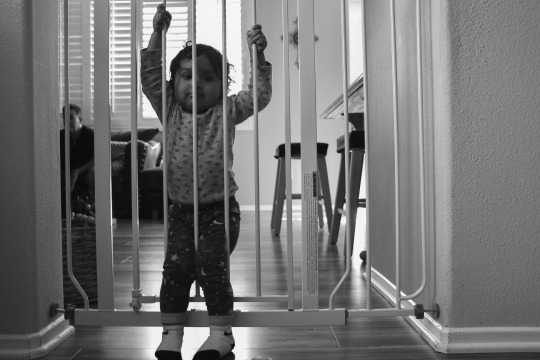
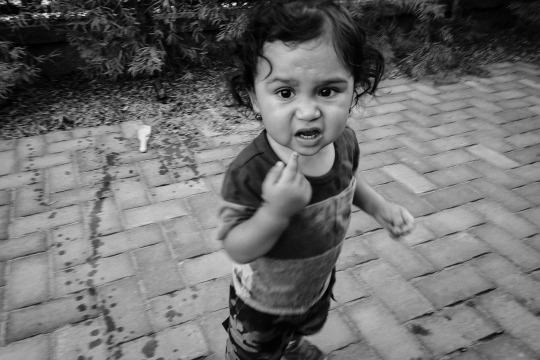
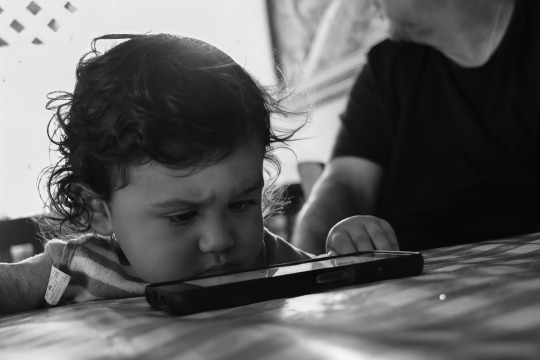
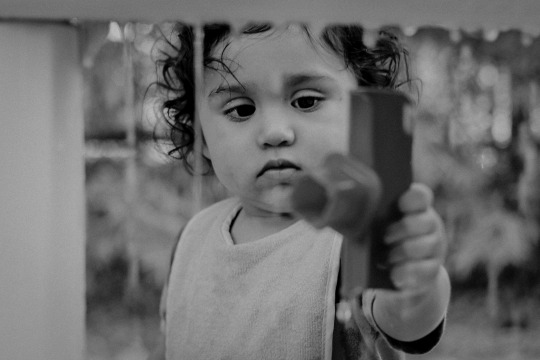
0 notes
Text
Ethics
Ethics: Doing the Right Thing
Photojournalism as a profession imposes a set of responsibilities. Some are fairly routine and fall neatly into the “daily duties” category: get to the scene, frame and focus the. Collect the caption info, and so forth.
Foundations of ethical decision-making
Photographers, whether they realize it or not, turn to an established ethical framework to try to guide their decisions. Framework includes:
Utilitarian: it recognizes that photojournalism provides information critical to democratic society. Photography can show the horrors of war, the tragedy of an accident, or the hardship of poverty.
Absolutist: The statement “Thou Shalt not Kill” is an absolute and inviolable regardless of the benefits to society. An absolutist principle might say “People have the right of privacy.” Invading the privacy of a family’s grief—regardless of the societal benefits—would be unacceptable to an Absolutist who adheres to an individual’s right to privacy.
The golden rule: You as a grieving parent might not want your picture taken. If you followed the Golden Rule, you would not run the photo because of how publishing the picture would have made you feel. You might abide by the Golden Rule if you thought of yourself as a grieving parent who wanted your child’s death to serve as a warning to other parents, leading you to run the photo anyway.
Guideline for photographing tragic moments
1. On conduct: stay out of the way and don’t disrupt what’s going on. Be sensitive to your subjects and the situation. 2. On equipment: in sensitive situations, carry as little gear as possible, leave the monitor drive off, and use the longest lens possible. 3. On selectivity: pick your own shots carefully--- look for angles and subjects that will not offend subjects and readers sensitivities. 4. On dress: wear “appropriate” clothing. 5. On follow-up: “consider contacting the subjects sometime after publication to discuss the reason for, and reaction to, publishing the image. Covering Funerals 1. Make arrangements in advance: when you get a funeral assignment, contact the family or close friends to let them know you are coming. Express your sincere sympathy by simply saying you are sorry about their lose. 2. Dress soberly: photographers must dress as if attending the funeral—a suit or dress in dark color. 3. Arrive early: you will be situated and a part of the scene when everyone else arrives. 4. Limit continuous firing: don’t unload with rapid bursts of images. 5. No lights, please: avoid using strobes. Nothing is more offensive than a strobe flashing in the face of a crying person during a funeral service. The distance rules
For stories, involving tragedy, editors sometimes make conflicting decisions regarding the play of written stories compared to photos. Because readers are more likely to complain about gruesome local pictures than images from far away, editors often will play down or suppress strong pictures that involve hometown residents but ran revealing pictures of atrocities in other parts of the world.
Shocking-picture warning signs
If five of the following conditions apply to a shocking picture, editors should prepare for reader reactions before the firestorm hits:
1. Images that show subjects overcome with grief 2. Pictures containing dead bodies 3. Pictures portraying mutilated bodies 4. Pictures run in color 5. Photos containing nudity 6. Photos take for a local story 7. Photos taken by a staff photographer 8. Images printed in a morning paper 9. Images on the front page 10. Images with no accompanying
Ethical concerns in photojournalism today
Ethics, journalistic responsibility, credibility, good taste and professional behavior are interrelated. Ethics are a system of moral principles that serves as the foundation for the way we conduct ourselves as human beings.
Protecting media credibility
We can influence judgments people make on the crucial issues of our time. We had better be honest and accurate with every picture taken. Every time a photographer takes a false picture, every time an editor publishes an untrue picture, our believability goes down the tube.
Responsibility to the subject
What is the responsibility of a photographer in the face of violence or threat thereof? Is the photographers first obligation to attempt to stop violence, or is the photographer’s first responsibility to get the pictures recording the events? Whenever possible we should make every effort to discourage violence or at the very least alert the proper authorities so they can do whatever is necessary to prevent the loss of life.
Manipulation of images
With the advent of computerized equipment and the introduction of electronic still camera systems, it is now possible to quickly and easily combine elements, alter colors, and manufacture photographs. The advanced technology of digital imaging has made image manipulation child’s play. The tools un the hands of unethical photographers can lead to more widespread journalistic distortions.
Posed photographs
What are the permissible bounds for set-up pictures? If a photographer know that a situation does take place in the routine course of subject’s activities, is it ethical to direct the individual to recreate the situation? There is hardly a journalistic photographer extant who hasn’t at one time, or another directed the subject to recreate an activity that he or she would normally engage in during the course of their daily routine.
Ethics and grief
Some of the most memorable war pictures ever made have concentrated on the impact if war on civilian populations. What purpose does it serve to record the grief of a mother whose child has just been killed by a car as he rode his bicycle? Or a couple on the beach mourning the loss of a drowned child? The main purpose of these pictures is to sell newspapers, to titillate their readers at breakfast time, and to increase circulation with sensationalism.
Defining photographic fiction
Photojournalism and photographic fiction are not interchangeable. Although photojournalistic pictures can and should be artistic, the demands of journalism supersede artistic concerns. Photographers can do whatever they like, just as writer can, but to be a “photojournalist,” one must stay in the realm of nonfiction.
Kinds of manipulation
Sometimes a photographer must illustrate certain key points in an article. Economic realities dictate that in such situations, the photographer must take photographers that approximate reality as nearly possible. It is believed that all too often the photographer takes the easy way out and controls the situations rather than trusts in their natural follow-up.
Electronic manipulation
The temptation to create photographic fiction is enhanced by the relative ease of electronic manipulation with the new technologies.
Example: News week magazine electronically combined pictures of Dustin Hoffman and Tom Cruise taken at different time and in different places to suggest that they were in the same room.
When pictures are set up for you
Photo opportunities are known in journalistic vernacular as photo-ops. Photo-ops are designed by the handlers of politicians to manipulate the media for image-building of the people they represent. So, let us grant that in a world dominated by photo opportunities devised by public relations persons and media advisers, objective truth becomes less visually attainable. Does that give television and print photojournalists license to set up pictures, to stage events, to distort reality? I suggest that it not only doesn’t give them that right, but it mandates that photographers use the camera to search for more truthful moments.
Ben Curtis and Errol Morris
Ben Curtis mentions that “at the end of the day it comes back to old-fashioned ethics. You have to trust your people on the ground, and you have to drill into them the ethical standards that your organization has.” It reminds me of when Chapnick talks about credibility and how we need to be honest and accurate with every photo that we select and having to think about the consequences of each picture taken.
Chapnick mentions that “every time a photographer takes a false picture, every time and editor publish an untrue picture, our believability goes down the drain.” With that being said it goes hand in hand with the situation that Ben Curtis was in when it came to his photograph of a Mickey Mouse in the middle of the street after an explosion. Errol Morris said, “and my own two cents of opinion on posing is that often we say a picture is posed is the photograph suggests a view that we don’t like, regardless of what the intention of the photographer might have been and regardless of whether it has or has not been manipulated.

Photography by Errol Morris.

“The soldiers were posing for Rosenthal’s camera — not for Campbell. So, is Campbell’s photograph candid or posed?”
0 notes
Text
Photo Stories & The Great Photographic Essays
Photo Story
Some stories can be built in a matter of minutes; sometimes it takes years to build a story.
Finding stories
Sometimes a picture story comes from the photographer’s own experience and talking with other people also can provide picture story ideas.
Assignments
Some stories develop when the Photographer takes an assignment from an editor or follows a call on the scanner radio.
Topical Trends
A trend story identifies a gradual but demonstrably real change that might include shifts in the public’s buying preferences, lifestyles, or a technological shift in an industry.
Look around you. Is there new fashion, hairstyle, social scene, sports phenomenon, or attitude toward some previously overlooked group?
Problems vs Solutions
To find stories that matter, think about the problems you and your friends face. When you think of an idea, some questions to ask yourself are:
Is there a possible story Idea here? How about a solution story? What else makes you mad or glad? Sometimes you can combine a problem with a solution, and then you have the best of photo stories. Telling Stories with Pictures How does your picture story differ from a collection of pictures on a topic?
Test Your Theme with a headline Headlines for stories without a theme might begin in the following ways:
“All you ever want to know about…”
“A day in the day in the life of…”
“Aspects of…”
“Scenes from…”
Some stories with these headlines might contain beautiful or even powerful pictures, but the pictures don’t add up to a story. Once you decide on a story and start to shoot, try writing a headline for it.
Types of people stories:
The well-known Celebrity report becomes boy-meets girl story Little-known but interesting Little-known but representative
Three approaches to a topic
A photographer can approach a topic in many ways but often the approaches fall into three categories:
The documentary reports: Reporting a lifestyle, documenting a place, bearing witness to an issue, covering the highlight of a topic and repetition as a documentary device.
Visual Consistency to hold photos together: Regardless of subject matter, pictures can be more powerful when they build a cohesive visual story. With a visually unified story, the viewer sees in almost every picture the repetition of the same:
Person Object Mood Theme Perspective, or Camera technique
The narrative story: Multiple pictures remain individual images unless they are integrated into a cohesive narrative in which the selection, theme, and order of presentation transforms the single photographs into stories that grab and then hold viewers attention.
What makes a good narrative story includes:
Complication alone Resolution alone External action for photo narrative Complication and resolution combined Natural narratives Resolution near at hand Existing pictures Different development stages
The essay: Some group of photos don’t set out to tell a narrative story. Rather, like an opinion piece or editorial, they seek to make a point. Written narratives typically have a fixed storyline that proceeds from one moment in time to another. Some stories lend themselves to the narrative from with a complication and resolution. For others, the documentary approach best conveys an objective record of a place or style.
The great photographic Essays
W. Eugene Smith
W. Eugene Smith has been characterized as “the master of the photographic essay.” No one in the history of photojournalism has had as profound and an impact on this narrative form as the complicated and complex Gen Smith. His interest always lay in weaving pictures together like a tapestry, stringing images together in to form a coherent story.

Donna Ferrato
Donna Ferrato is the Anais Nin of contemporary photojournalism. Since the late 1970s, Ferrato’s attention has been consumed with two major projects, domestic violence and human sexual behavior.

The urgency of the photographic essay
Photographic essays represent the height of photographic aspirations among photographers. Newspaper photographers leave well-paying jobs in search of the highest truth, as actualized by the photographic essay. Writers write and photographers photograph because they feel that the story has to be told and because the times demand it.
Structure of the photographic essay
1. The photographer must start with an idea that is cogent, concise, journalistically realizable, and visually translatable.
2. The subject must have depth and diversity of situations, and visual redundancies must be avoided. Each photograph should add new dimensions of understanding to the subject being photographed.
3. Photographic essays need time to permit exploration of every nuance of the subject, time to allow the elements of conflict within the story to reveal themselves, time for the photographer to be immersed in the subject and grow in understanding.
4. Photographic essays require cooperation. Subjects of such stories should be apprised early on in the project that demands on them will be great, that the photographer might intrude on the individual’s privacy in getting beyond superficial.
5. If the story is based on an individual personality, it must reveal essence of that individual, warts and all, and not be press-puffery in lieu of honesty and reality.
6. Great photographic essays are dependent on words to amplify the photographs, to interrupt photographic ambiguities, to form a journalistic whole, where words and pictures are perfectly matched.
7. On a photographic essay, preconceptions and illusions are dashed. Photographic essays can turn out to be voyages of discovery in which the subject’s evolution is antithetical to the original conception.
8. The success of a photographic essay depends in attention to detail. The photographer should have a structure in mind, written or unwritten, as the essay unfolds.
9. Putting together a photographic essay is personal, it cannot be done by committee. It is an individual statement, so conceived that usually only the photographer is capable of putting it together in a comprehensible way.
My Photo essay inspiration
My Kids Life One Picture at a Time




I find these photos to be effective because I feel that they evoke emotion and understanding without using words. It shows great documentation on what there kids life looks like and as discussed in the text for documentary report it focuses on the same person(s) creating repetition.
0 notes
Text
Environmental Portraits
Christian Rubalcaba is a 26-year-old man who works in the pool industry as a pool technician. Christian was about 15 years old when he was introduced to the pool industry by his father who owned his own business. “My dad would take me to work with him during the summer and sometimes early in the mornings before he had to drop me off at school. I remember telling myself how much I hated spending my summer working with my dad.” After years of helping out his dad Christian new that’s what he was good at and is what he wanted to do after graduating high school. “School was never my thing which is why making the decision to go into this business was easy and looking back, no matter how much I didn’t enjoy spending my summer working; I’m grateful for it. Now I’m 26 with my own business.”
During the COVID-19 pandemic Christian was considered an essential worker and was lucky enough to still have his job to support himself, although with COVID-19 shutting down everything he had to find something to keep himself sane. “I found myself making time to fix my C-10 truck that I bought 2 years before the pandemic. Fixing my truck is how I relieve my stress after work and how I spend my weekends.”
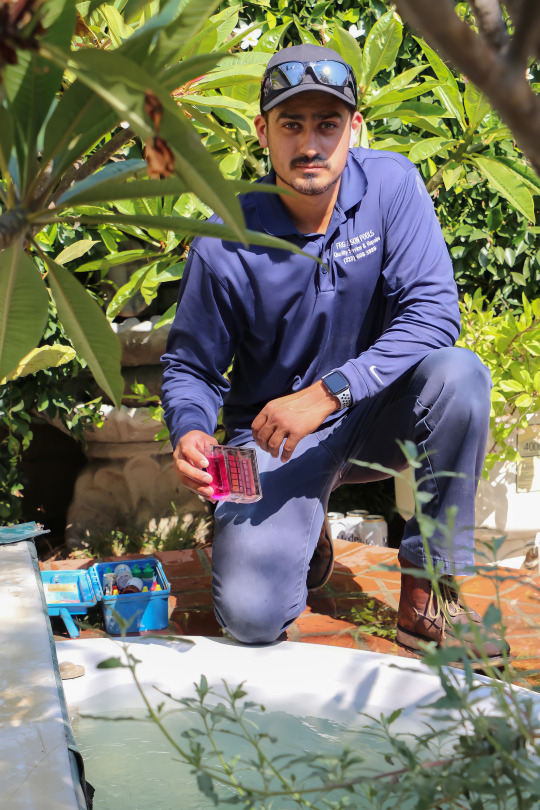
ISO 00. 50 mm. f/6.3. 1/125
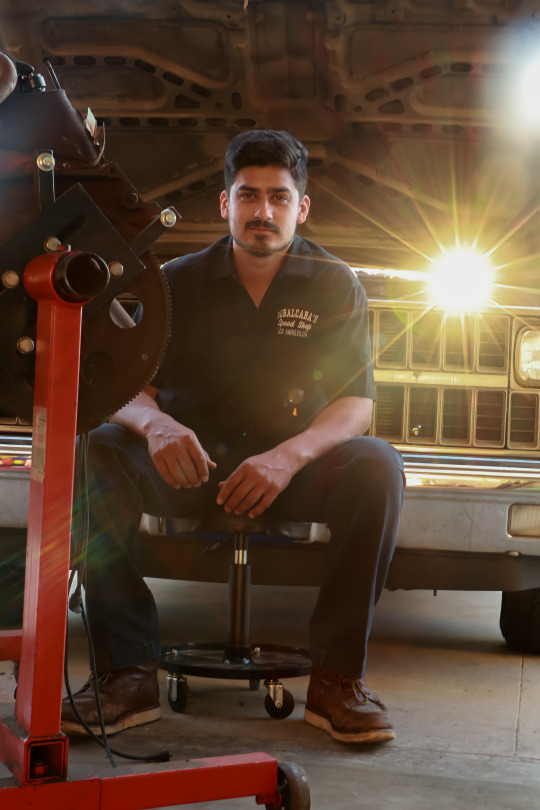
ISO 800. 35mm. f/13. 1/15
0 notes
Text
The Photojournalist and the Portrait
“The photojournalist and the Portraits
According to the text Truth Needs no Ally by Howard Chapnick and according to Robert Sobieszek, curator of photography at the George Eastman House in Rochester, New York, the purpose of the photographic portrait “has been to record the faces and figure of kin, acquaintances, and the famous. As a document, the portrait becomes a form of visual biography utilized for both immediate recognition and historical recollection.”
Throughout a typical career, the photojournalist will be called upon to do more photographic portraits than any other kind of assignment. Many of the photographs you find in the news magazines are what are called “significant portraits,” relating the individuals to the singular accomplishments they have achieved, discoveries they have made, issues they have confronted, or new products they have patented or developed.
In taking better portraits, the photographer must aim to go beyond the photographic snapshot of record. Portraits that will be remembered and appreciated are those that penetrate public masks, revealing the inner person beneath.
This can be achieved by: - Capturing facial expressions - Unconscious hand gestures - A contemplative look
Arnold Newman: Environmental Portraits
“No one picture can ever be a final summation of a personality. There are so many facets in every human being that is impossible to present them all in one photograph. When I make a portrait, I don’t take a photograph. I build it, seeking all those graphic elements that will express the most typical common denominator of the subject as I see him within the obvious limitations of a single image.”

Newman’s 1942 portrait of artist Piet Mondrian
Brian Lanker: Portraits of Dignity
Brian Lanker produced a portrait projects based on a simple idea executed with grace, simplicity, and compassion. In I Dream a World, Lanker set out to make portraits that would underline the power and strength of black women who changed America.

“The exhibition of late photographer Brian Lanker’s work includes a portrait of Rosa Parks in Dexter Avenue Baptist Church where the mid-1950s Montgomery Bus Boycott was organized.”
Portraits
After reading the chapter about portraits from the book Photojournalism by Kenneth Kobre I learned a few helpful tips that could help you accomplish a great portrait.
Steve Raymer who’s the longtime staff photographer for National Geographic said, Candid photography can produce honest, believable portraits without a lot of elaborate prompting, staging, or lighting. It’s a matter of knowing the subject, using the light, and waiting for the moment.
Put Your Subject at Ease
If someone is uncomfortable in front of the camera, the best photojournalistic techniques in the world will not produce will not produce a revealing portrait. Photographers develop different techniques to loosen up and relax their subjects.
Here are some choices to consider…
Talk it over During a shooting session, the talk usually turns into the person’s involvement in the story. When people become engrossed in conversation, they often forget about the camera, which allows those candid moments in otherwise controlled situations.
Look them in the eye
Rather than using the viewfinder for portraits, many photographers use the camera’s LCD monitor to frame the picture while still maintaining eye contact.
Example: Alfred Eisenstaedt an original Life magazine staffer, avoided the disruption of picking up and putting down the camera by using a tripod and cable release. He said, “for me, this method often gives the most relaxed pictures.”
Let people be themselves
o Watch for your subject’s body language:
How do they hold themselves, erect or relaxed?
Do they point with their fingers or make a fist?
Which way do they tip their head?
When they are relaxed, do they use one hand or two to hold up their head?
o Look to see how comfortable they are with their own body
Be a bore (but not a boor)
When you have time, the boredom technique works well; if you wait long enough, the subject often gets tired of posing, and you can shoot natural looking photos that result in casual, relaxed portraits.
Let someone else do the talking
If an interviewer doesn’t accompany you on an assignment, take a friend along. When no outsider is available, look for someone on location, like the subject’s colleague, to whom he or she might enjoy talking. Light as a Storytelling Element When a moodier effect is desired, however, photographers often choose lighting that will leave large areas of the picture in shadow. The photos dominant tones are dark gray and black.
Understand light
To add depth to a subject’s face, arrange the person so that the main light, whether it is from a continuous light source, flash, or window, falls toward the side of his or her face.
Look for light
Example: Nicole Bengiveno will use any light she can find. “there have been times I have used the headlight of a car, streetlamp, or a table lamp,” she says. To find the right light and to catcg her subjects in a more relaxed atmosphere, Bengiveno often takes people for a walk in the streets.
Provide clues to the “inner person”
A subject’s face, hands, and body position reflect the psychological state of the sitter…
Are the subjects smiling or showing a grim face?
Are his hands pulling at his beard or resting at his side?
Is he standing confidently or shifting awkwardly?
Environmental portraits
An environmental portrait supplies enough details with props, choice of dress, and choice of background to let the reader know something about the lifestyle of the sitter.
In an environmental portrait, the subject is photographed at home, at the office, or on location, the place that best reflects the story’s theme.
Group portraits
-Show all faces
A prime requirement of a formal group portrait is that it shows, as clearly as possible, each person’s face. This takes careful planning. Arranging subjects’ shoulder-to-shoulder sometimes works but arranging people in rows, one row behind the other might work better.
-Soft light is best
For group portraits, soft light creates the minimal of shadows is usually the most effective.
-Add zest to small-group portraits
Try to keep each person’s head on a different level. With a combination of kneeling, sitting, and standing.
Dress the alike
Hand them props
Watch the background
Pose to carry information
2 notes
·
View notes
Text
Ideas & Personal Projects
Ideas
According to the text Truth Needs no Ally by Howard Chapnick, photojournalists need more than technical skills to succeed and well-thought out ideas are their most important asset. To a photojournalist thinking is a must in the development of editorial ideas and when it comes to thinking, thinking is an adventure, thinking is power, and thinking is fun. It’s important to remember that ideas are just as important as other elements such as technique, composition, content, selection of details, and etc. that goes into the making of a picture story, photographic essay, or news coverage. Without ideas there are no stories.
When it comes to ideas a magazine editor might not always rely on their in-house staff to develop concepts and stories, they will constantly turn to freelance photographers and other sources for new ideas. As the photojournalistic marketplace expands, the most successful photographers will be those who generate the most and the best editorial ideas. A photographer is responsive to what is happening in his or her corner or other parts of the world can serve as an independent research arm and source of ideas for magazines.
A blog post called The Importance Of An Idea In Your Photography by Frank Calidonna also touches base on the importance of idea. Frank mentions that “Nothing in your creative life is as important and fragile as an idea. Initially they are fleeting and elusive. They must be recorded as soon as possible after conception or they will be lost forever. “
Becoming an Ideas Person:
Photojournalists have to be constantly expanding their world, exposing themselves to new people, new ideas, new experience. An example the text mentioned was that “David Douglas Duncan could never have done his monumental work on Pablo Picasso had he not pursued contact on several levels.”
When developing ideas, they must be visually translatable such as skydiving, mental institutions, teaching a one-year-old to swim, childbirth, and etc. Therefore, other ideas could be more difficult to photograph which means the photographs will rely on the interpretation of the photographer—such as New York City, the Hudson River, and New York women.
The Good Ideas Around You:
Ideas are everywhere—in newspapers, magazines, books, music, and on television news and feature programs. They relate to your life. The original idea is not based on an event is the most distinctive kind of editorial idea. It can. Rarely be duplicated.
An example from the text would be when “Jim Richardson was a staff photographer at the Topeka Captial Journal, he spent more than three years photographing life in two hundred-pupil high in Rosseville, Kansas.” This idea was based off of his knowledge of rural small-town life in Kansas.
I remember last semester having a photojournalist by the name of Julio Cortez as a guest speaker and there was a story that he mentioned that reminds me that there are stories and good ideas around you. He mentioned being in an airport and seeing a woman and her child and he decided to go up to them and have a conversation and the conversation led to him changing his flight to follow them and create a story. According to his article “A few days ago Yancarlos Amaya was walking along the muddy riverbank after crossing the Rio Grande and landing on the U.S. side of the border with Mexico. His mother, Celestina Ramirez, 28, said they turned themselves in to U.S. Border Patrol officers and later spent hours in custody, a night under a bridge and three more days in a detention facility.”
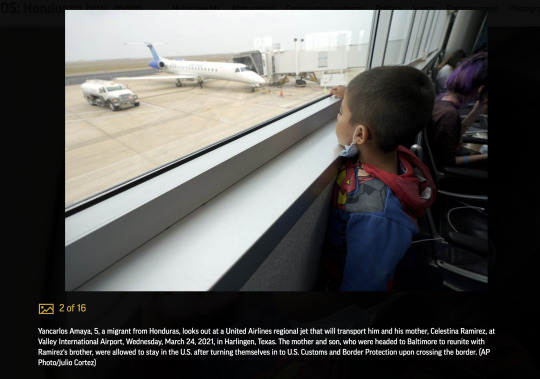

Presenting Your Ideas
The text from Truth Needs no Ally mentions what is needed to be done by the photographer in order to present a great idea. The first is having a first-hand knowledge of what subjects has been published in the last five to ten years. Which also means to have the common sense to look through the National Geographic index to assure that the ideas you want to present haven’t been done already.
What you also want to keep in mind is that when an editor receives a story idea, the first questions they are going to ask is:
“Why should we do this story?”
“Will this story be of interest to our audience?”
“Does this free lance have his facts straight; is that really the situation?”
Some editors can also be so literate that for them a misspelled word or punctuation mark or error in grammar is like a stop sign.
Some Basic Rules for Submitting Picture-Based Ideas to Editors:
1. The idea is visually translatable.
2. It it necessary to spell out preconceived individual pictures in a proposal.
3. The idea should be presented in a tight, cohesive, simple proposal.
4. In the proposal address why the publication should be interested in publishing your idea.
5. The idea should have a nucleus, a central theme, a core from which the elements of the story radiate.
6. Proposals for stories should reflect strong personal interest in the idea.
7. Sell your ideas enthusiastically.
8. Above all, research, research, research.
Personal Projects
Undertaking a personal project means having to be self-demanding, self-motivated and stubborn. It means being willing to spend many hours, maybe years, on the project, and subordinate other pleasurable aspects of your life to it. You can literally do a project in your own backyard.
For example Bill Owen’s backyard was Livermore, California. He wad working as a photographer for the Livermore newspaper in the 1960s. He began to photograph his neighbors and the life they lived in their tract homes. He then explored the social phenomena of existence in his book, Suburbia. Later he followed up on other projects.
Sometimes projects take the form of cooperative ventures, where several photographers work in concert; the aim is altruistic and the impact profound.
0 notes
Video
tumblr
60 second video on overcoming my struggles this semester.
1 note
·
View note